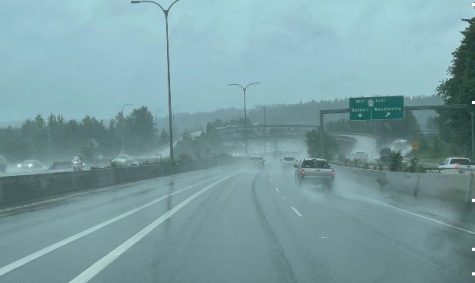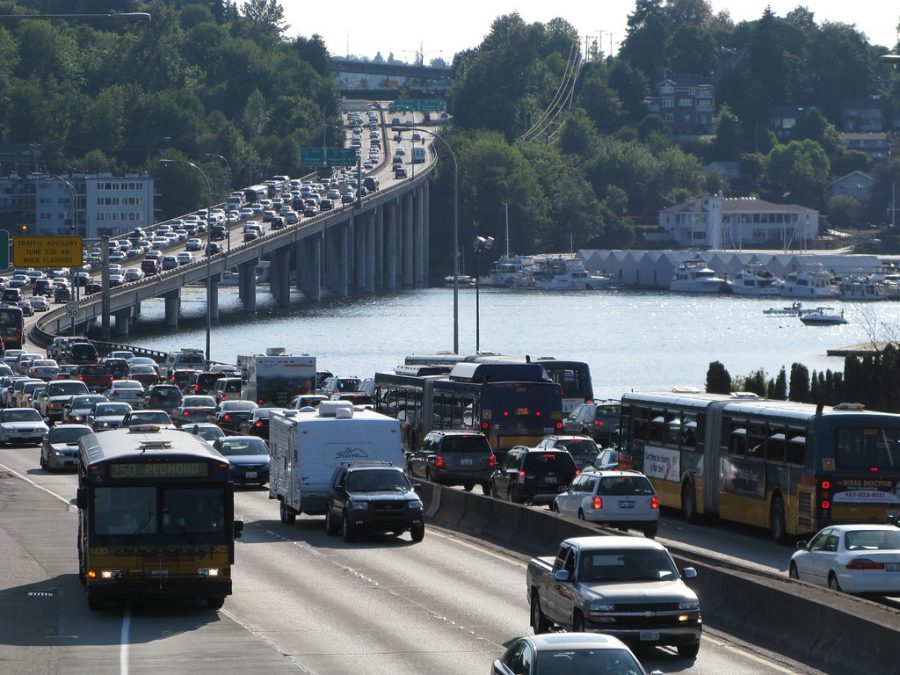Are Seattle Drivers Any Good?
Criticizing Seattle’s Clueless Commuters
If your commute is anything like mine, you probably have daily runs-in with passive aggressive Seattle drivers on the road — or, even worse, you might be one of them. Earlier this year, Washington was ranked the second-worst U. S. state to drive in based on a study conducted by finance website WalletHub. The study analyzed economic aspects of driving like gas prices and insurance costs, as well as factors such as accident rates and traffic fatalities.
But what irks me most, as someone who grew up around East Coast drivers, is the undue passivity of Seattle drivers. Although this may seem like a ridiculous complaint, the overt “politeness” of Seattle drivers creates its fair share of problems and significantly slows traffic flow. Four-way stops take twice as long as they need to because the driver who clearly approached the intersection before you insists that you go first. Right turns are often an inconvenience, as drivers refuse to turn on red.
And honking. Honking exists for a reason aside from unleashing unbridled rage into the world; it is primarily used to let someone know when they do something wrong and cause a traffic risk. However, Seattleites don’t seem to understand this concept. When you honk at someone going 60 miles per hour in the passing lane of the highway, they turn to look at you as if you just cursed their family name.
Now, I recognize that Seattle drivers are not completely at fault for the awful traffic on both highways like I-5 and SR 520 and small neighborhood streets. There are too many people and not enough space on highways, and side streets are too thin to fit parked cars on both sides. Rain and fog may also make visibility difficult, and as many know, as soon as the rain comes out, everyone forgets how to drive. However, considering how much it rains, we should expect people to know how to safely and efficiently drive in inclement weather by avoiding tailgating but not traveling at snail-like speed.
If you are confused or find yourself thinking, “What is this girl talking about? I never go first at a four-way stop, and I go five under the speed limit, no matter the lane,” you are probably part of the problem. Please go study up on traffic safety, and take a taxi through NYC for the thrill of a lifetime.
— Lucy K. ’24

Defending Seattle’s Docile Drivers
Contrary to what Jeep ads might have you think, driving is not principally about thrill. It’s about getting from Point A to Point B without crashing. For me, the speed of my trip is always a secondary concern — it’s better to get there alive and late than not at all. With these goals in mind, Seattle drivers, while occasionally infuriating, are really just looking out for our collective safety.
This shows up in the statistics. According to Allstate insurance, Seattle is the 45th safest driving city in the U. S. Seattle drivers, on average, have accidents about half as often as Baltimoreans (7.7 years between collisions compared to 4.2). Washington, D. C. and Boston, along with Baltimore, top the list as three cities with the most dangerous driving. The common denominator between these cities? Reputations for extreme aggressiveness.
Cities in California like Los Angeles also rank near the top of the list. Many of these cities have high speed limits, wide streets, and a propensity for driving even faster than the posted limits. I experienced this firsthand driving up I-5 in Southern California, navigating the highway’s tight bends at over 80 mph to keep up with the speed of traffic. I don’t recommend the experience. Whenever I’m moving along at 25 mph on a Seattle arterial, I remember my gratitude for not being on a California freeway. At these slower speeds, cars are also much less dangerous to bikers and pedestrians.
In my view, much of Seattle’s traffic malaise is caused not by its drivers but by poor infrastructure design choices. Anyone who has driven on I-5 and had to cut across five lanes of traffic in less than a mile knows what I’m talking about. In these situations, passive drivers actually make it easier to change lanes, compared to aggressive East Coast drivers who couldn’t care less about the rush you are in. But overall, our city was built for far fewer cars than it now must carry, and the overcrowding and traffic are matters of simple numbers, not driver skill.
Maybe it’s just that I, too, am a non-confrontational Seattleite, but I’ll take safety over speed any day of the week. I’m more than happy to wait two extra seconds at an intersection when the alternative is increased repair costs, and risk of injury or death. Let’s save our aggression for Seahawks games. Stay calm, Seattle, and let’s stay safe together.
— Zane R. ’24
Review: Lucy: The Movie (★★★★☆)
Released in 2006, Lucy was an instant classic the day she hit movie theaters. The movie’s character development...
Review: Zane: The Movie (★★★★☆)
Released in early 2006, Zane quickly became a fan favorite. A charming and lovable fella, Zane has captured...

